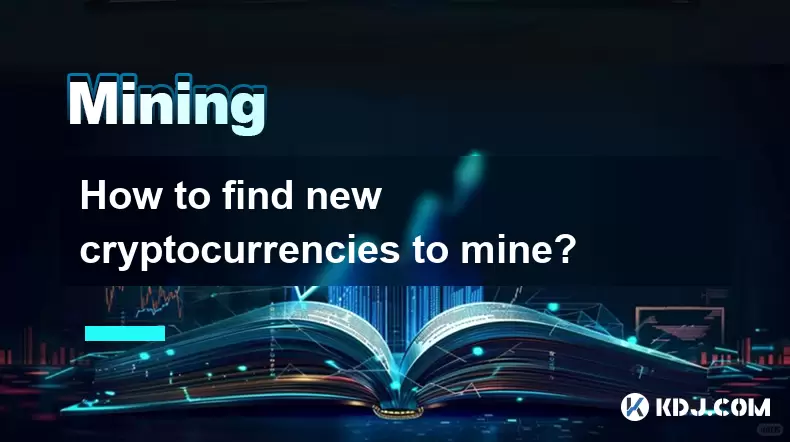-
 Bitcoin
Bitcoin $118100
0.44% -
 Ethereum
Ethereum $3765
5.84% -
 XRP
XRP $3.498
3.12% -
 Tether USDt
Tether USDt $1.000
0.00% -
 BNB
BNB $753.2
3.41% -
 Solana
Solana $181.7
3.58% -
 USDC
USDC $0.9999
0.01% -
 Dogecoin
Dogecoin $0.2704
12.75% -
 Cardano
Cardano $0.8684
5.85% -
 TRON
TRON $0.3151
-0.86% -
 Hyperliquid
Hyperliquid $46.06
4.51% -
 Stellar
Stellar $0.4695
2.48% -
 Sui
Sui $3.910
3.18% -
 Chainlink
Chainlink $19.36
6.65% -
 Hedera
Hedera $0.2750
3.99% -
 Bitcoin Cash
Bitcoin Cash $544.6
6.31% -
 Avalanche
Avalanche $25.12
3.69% -
 Shiba Inu
Shiba Inu $0.00001559
5.40% -
 Litecoin
Litecoin $116.8
5.10% -
 UNUS SED LEO
UNUS SED LEO $8.991
0.05% -
 Toncoin
Toncoin $3.283
2.79% -
 Polkadot
Polkadot $4.509
3.97% -
 Uniswap
Uniswap $10.67
6.58% -
 Ethena USDe
Ethena USDe $1.001
-0.01% -
 Monero
Monero $323.2
0.48% -
 Pepe
Pepe $0.00001410
6.37% -
 Bitget Token
Bitget Token $4.964
1.93% -
 Dai
Dai $0.9998
-0.01% -
 Aave
Aave $326.2
3.85% -
 Bittensor
Bittensor $421.8
2.46%
How to find new cryptocurrencies to mine?
Discover new mineable cryptocurrencies by tracking exchange listings, exploring blockchain explorers, and engaging with developer communities for early opportunities.
Jul 13, 2025 at 07:22 am

Understanding the Basics of Cryptocurrency Mining
Cryptocurrency mining involves validating transactions on a blockchain network and securing them into blocks using computational power. Miners are rewarded with newly minted coins or transaction fees for their efforts. Before diving into how to find new cryptocurrencies to mine, it is essential to understand proof-of-work (PoW) consensus mechanisms, as most mineable coins operate under this model.
New cryptocurrencies often emerge through forks, initial coin offerings (ICOs), or newly launched projects. These may offer opportunities for early miners who can take advantage of lower network difficulty before widespread adoption increases competition.
Monitoring New Listings on Cryptocurrency Exchanges
One of the most effective ways to discover new mineable cryptocurrencies is by tracking listings on major and emerging exchanges. Platforms like Binance, KuCoin, and smaller altcoin-focused exchanges frequently list new tokens, some of which are mineable.
- Check the official announcements section of exchanges regularly.
- Subscribe to exchange newsletters or follow their social media accounts.
- Use tools like CoinGecko or CoinMarketCap to filter newly listed cryptocurrencies and check their mining status.
When a new cryptocurrency appears on an exchange, it often comes with details such as blockchain explorer links, mining algorithms used, and whitepaper information, which are crucial for determining whether it's worth mining.
Exploring Blockchain Explorers and Mining Pools
Blockchain explorers are invaluable tools when trying to identify new cryptocurrencies that support mining. By browsing explorers like Blockchair, Blockcypher, or Etherscan, you can observe recent blockchains that have started generating blocks but haven’t yet gained mainstream attention.
- Look for chains with low hash rates and few blocks per hour.
- Pay attention to chains that use less common algorithms, such as KawPow, ProgPoW, or RandomX, which might be less competitive.
- Visit mining pool websites like Minexmr.com or MiningPoolStats, which often list newly added coins along with profitability metrics.
These pools sometimes provide configuration guides for connecting your mining rig to the new chain, making it easier to start mining immediately after verification.
Participating in Developer Communities and Forums
Engaging with developer communities can give you early access to information about upcoming mineable cryptocurrencies. Platforms like GitHub, Reddit’s r/CryptoCurrencyMining, and BitcoinTalk Announcements are hotspots for developers announcing new projects.
- Follow active GitHub repositories related to blockchain development.
- Join Telegram or Discord groups focused on mining and blockchain innovation.
- Watch out for testnet launches or mainnet airdrops, which often precede public mining availability.
Developers often share wallet download links, node setup instructions, and mining software compatibility during these early stages, allowing miners to jump in before wider adoption.
Evaluating Mining Profitability and Risks
Before committing resources to mine a new cryptocurrency, it’s crucial to evaluate its profitability potential and associated risks. Several factors influence whether mining a new coin will be worthwhile:
- Algorithm compatibility: Ensure your hardware supports the mining algorithm used by the coin.
- Block rewards and halving schedules: Higher initial rewards can make mining more attractive.
- Network difficulty growth: A rapidly increasing difficulty could reduce earnings over time.
- Market volatility: Newly launched coins may experience sharp price fluctuations, impacting ROI.
Use mining calculators like WhatToMine or NiceHash Profitability Tool to simulate earnings based on current hash rate, power consumption, and market prices. Always factor in electricity costs and hardware depreciation when estimating returns.
Setting Up Your Mining Rig for New Coins
Once you’ve identified a promising new cryptocurrency to mine, the next step is configuring your mining rig accordingly. This typically involves several key steps:
- Download and install compatible mining software such as CGMiner, BFGMiner, or PhoenixMiner, depending on the algorithm.
- Obtain the mining address from your wallet or the project’s official documentation.
- Configure mining pool settings including stratum server address, port number, and worker name.
- Adjust intensity and thread settings to optimize performance without overheating your hardware.
- Monitor system temperatures and hash rates using tools like MSI Afterburner or HWInfo.
Each new cryptocurrency may require different configurations, so always refer to the official mining guide provided by the project team or community forums.
Frequently Asked Questions
Q: Can I mine new cryptocurrencies with a CPU?
A: Yes, many new cryptocurrencies are designed to be mined using CPUs, especially those that use memory-hard algorithms like RandomX. These coins aim to promote decentralization by discouraging ASIC dominance.
Q: How do I know if a new cryptocurrency is not a scam?
A: Research the development team behind the project, review the whitepaper thoroughly, and verify code repositories on GitHub. Also, look for transparency in token distribution and audit reports if available.
Q: Are there risks involved in mining obscure cryptocurrencies?
A: Yes, mining unknown coins carries risks such as low liquidity, high volatility, and potential abandonment by developers. It’s advisable to only allocate a small portion of your mining capacity to unproven projects.
Q: What should I do if my mining software doesn’t support the new coin’s algorithm?
A: You may need to search for alternative mining software that supports the specific algorithm or wait for updates from existing developers. Community forums often share custom forks or patches for newer algorithms.
Disclaimer:info@kdj.com
The information provided is not trading advice. kdj.com does not assume any responsibility for any investments made based on the information provided in this article. Cryptocurrencies are highly volatile and it is highly recommended that you invest with caution after thorough research!
If you believe that the content used on this website infringes your copyright, please contact us immediately (info@kdj.com) and we will delete it promptly.
- NFT Performers in Flux: Pudgy Penguins, Courtyard, and the Shifting Sands of the Market
- 2025-07-21 10:30:12
- Decoding HKMA's Stablecoin Licensing System: A New Era for Digital Assets?
- 2025-07-21 10:50:11
- Address, CryptoPunks, NFTs: What's the Buzz?
- 2025-07-21 10:50:11
- Ethereum, Crypto, and Market Moves: What's the Deal?
- 2025-07-21 11:30:11
- CoinDCX Hack: A Wake-Up Call for Crypto Security
- 2025-07-21 11:35:12
- Dogecoin & Meme Coins in 2025: Hype or Hyper-Growth?
- 2025-07-21 08:30:12
Related knowledge

How are crypto mining profits taxed?
Jul 14,2025 at 12:28am
Understanding Cryptocurrency Mining and TaxationCryptocurrency mining involves validating transactions on a blockchain network and earning rewards in ...

How to keep a mining rig cool
Jul 12,2025 at 01:42pm
Understanding the Importance of Cooling in Mining RigsCryptocurrency mining is an intensive process that places heavy demand on hardware components, p...

How to mine crypto on a gaming PC
Jul 16,2025 at 12:00pm
What is Crypto Mining on a Gaming PC?Crypto mining involves using your computer's processing power to validate transactions on a blockchain network. A...

How to set up a crypto miner
Jul 16,2025 at 09:14am
Understanding Ethereum Gas Fees: What Are They and How Do They Work?Ethereum gas fees are a fundamental aspect of the network, representing the cost r...

Can you mine crypto on a laptop?
Jul 16,2025 at 02:21am
Is It Feasible to Mine Cryptocurrency on a Laptop?Mining cryptocurrency on a laptop is technically possible, but feasibility depends heavily on the ha...

Is crypto mining worth it?
Jul 16,2025 at 01:21am
Understanding the Basics of Crypto MiningCrypto mining refers to the process of validating transactions on a blockchain network by solving complex mat...

How are crypto mining profits taxed?
Jul 14,2025 at 12:28am
Understanding Cryptocurrency Mining and TaxationCryptocurrency mining involves validating transactions on a blockchain network and earning rewards in ...

How to keep a mining rig cool
Jul 12,2025 at 01:42pm
Understanding the Importance of Cooling in Mining RigsCryptocurrency mining is an intensive process that places heavy demand on hardware components, p...

How to mine crypto on a gaming PC
Jul 16,2025 at 12:00pm
What is Crypto Mining on a Gaming PC?Crypto mining involves using your computer's processing power to validate transactions on a blockchain network. A...

How to set up a crypto miner
Jul 16,2025 at 09:14am
Understanding Ethereum Gas Fees: What Are They and How Do They Work?Ethereum gas fees are a fundamental aspect of the network, representing the cost r...

Can you mine crypto on a laptop?
Jul 16,2025 at 02:21am
Is It Feasible to Mine Cryptocurrency on a Laptop?Mining cryptocurrency on a laptop is technically possible, but feasibility depends heavily on the ha...

Is crypto mining worth it?
Jul 16,2025 at 01:21am
Understanding the Basics of Crypto MiningCrypto mining refers to the process of validating transactions on a blockchain network by solving complex mat...
See all articles

























































































